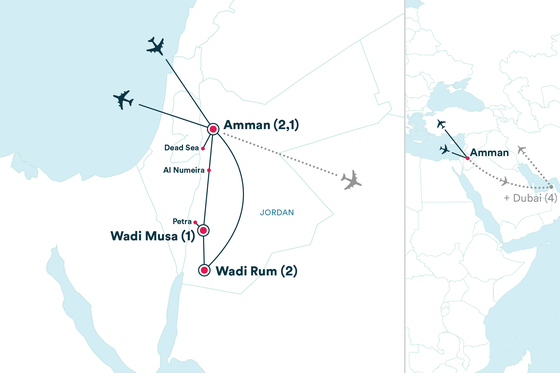
Real Local: A Day at Jaipur’s Channi Carpets & Textiles
Now that I’ve experienced Jaipur firsthand, I’ve realized it’s so much more than the pink-hued city that fills social feeds.
If you ever find yourself on our India: The Golden Triangle tour, you’ll be lucky enough to spend a few days in Jaipur. Before visiting, I only knew Jaipur as the Pink City—the place where my favorite influencers and TikTokers posed in front of the iconic cotton-candy-hued Hawa Mahal. I’d been eager to visit the City Palace and, of course, snap my own photo in front of Hawa Mahal.
But what truly stood out to me about Jaipur was the city’s deep-rooted tradition of handicraft excellence—from carpet weaving and textile dyeing to block printing, gemstone cutting, and jewelry making.
On our second day, our amazing Tour Director, Ahbi, took us to Channi Carpet and Textile Collective, where we were warmly welcomed by Kapil. He gave us an incredible live demonstration of block printing and carpet making, allowing us to witness the craftsmanship this city is famous for that has been passed down through generations.

Block printing
Kapil explained that for nearly every design they use in block printing, they have two versions of each block—one carved from teakwood, used for printing on cotton, and the other made from metal, reserved for printing on silk. The larger blocks, known as master blocks, create the main outlines of a design, while smaller blocks are crafted to fit perfectly within the master block’s pattern, often used to fill in the outlines with vibrant colors.
Next, we learned about the natural dyes used in the block printing process. Each color is derived from local, natural materials—red comes from sugar cane, yellow from turmeric, white from limestone, and green from mango leaves. Other hues are created by skillfully mixing these base colors, resulting in a stunning palette that’s as rich in tradition as it is in tone.

Then we had the chance to watch the magic unfold in real time. One block was dipped into dye and carefully pressed onto the cotton, followed by a second block that fit perfectly within the first, adding layers of color and detail. This process was repeated with incredible precision until a full section of the design was complete—then started again, seamlessly, until the entire fabric was finished.
Seeing the final products—so vibrant, intricate, and perfectly aligned—it’s almost hard to believe they’re crafted entirely by hand, using nothing but natural dyes and hand-carved blocks. The artisans create everything from pillowcases and clothing to placemats and bed linens, each piece a testament to their skill and dedication.

Carpet knotting
Next, we moved on to the carpet-making demonstration, where we learned that around 10 artisans typically work on knotting carpets at the collective. However, many more craftspeople across Jaipur also contribute, weaving carpets from their homes for Channi Collective. To support these artisans, especially those unable to travel, staff from the collective regularly drive around the city to pick up finished pieces, ensuring everyone’s work can be showcased and sold.
Watching the artisan’s hands move with astonishing speed and precision was mesmerizing. The pattern he was creating was incredibly intricate, with colors changing every few knots. Despite the complexity, he barely glanced at the grid paper laid out on the lower part of the loom. He explained that the design had been passed down through generations in his family—and he had committed it to memory from years of practice.

After the demonstrations, our group was excited to explore the storefront, where beautifully finished carpets and block-printed items were available for purchase. We left with armfuls of souvenirs and thoughtful gifts for friends and family back home. Visiting Channi Collective—and having the chance to support their mission to sustain local artisans and preserve Jaipur’s traditional handicrafts—was truly an unforgettable experience.











































































